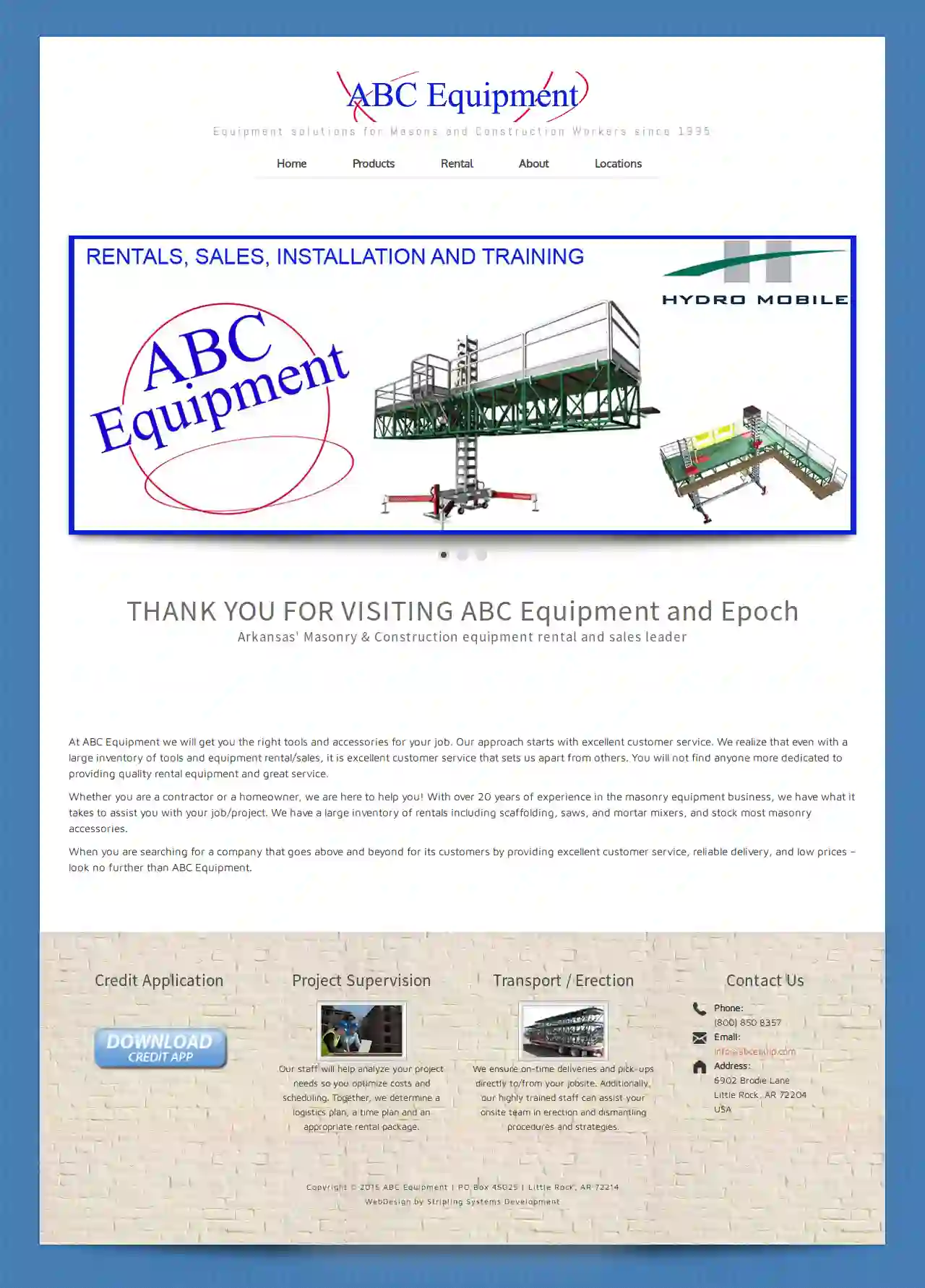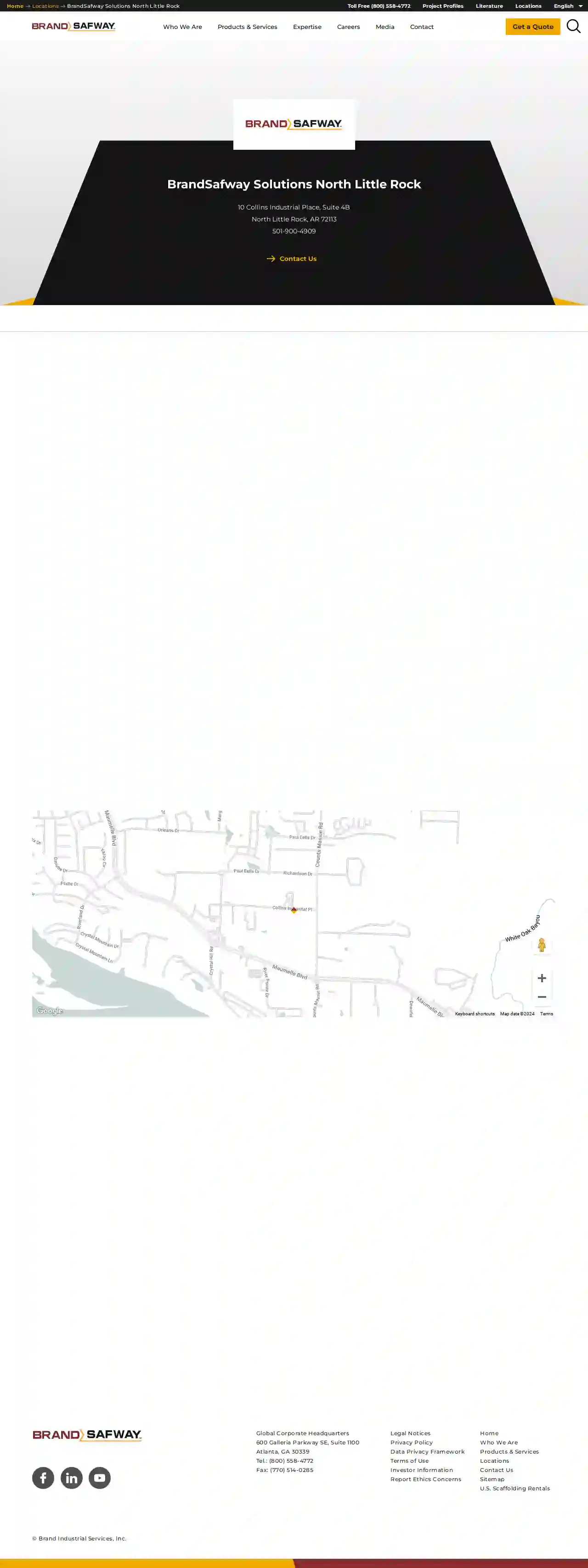Scaffolding Rental Mountain Home
Find top Scaffolding Rental Services in Mountain Home
Get 3 FREE Scaffolding Rental Services quotes for your project today! Compare profiles, reviews, accreditations, portfolio, etc... and choose the best service.

ABC Equipment
4.19 reviews6902 Brodie Lane, Little Rock, 72204, USABC Equipment: Your Partner in Masonry & Construction Since 1995, ABC Equipment has been a trusted provider of equipment solutions for Masons and Construction Workers in Arkansas. We understand the importance of having the right tools for the job, and we're committed to providing our customers with the highest quality equipment and exceptional customer service. Our team is dedicated to helping you succeed. We offer a wide range of rental equipment, including scaffolding, saws, mortar mixers, and a variety of masonry accessories. We also provide project supervision, transportation, and erection services to ensure your project runs smoothly. Whether you're a seasoned contractor or a homeowner tackling a DIY project, ABC Equipment is here to support you. We're proud to offer competitive prices, reliable delivery, and a commitment to exceeding your expectations. We're more than just an equipment rental company; we're your partners in success. Contact us today to learn more about how we can help you achieve your project goals.
- Services
- Why Us?
- Gallery
Get Quote
BrandSafway Solutions North Little Rock
North Little Rock, AR, 1234 Industrial Blvd, 72118, USBrandSafway is a leading provider of access solutions, including scaffolding, aerial work platforms, and forming and shoring. With a strong commitment to safety, quality, and customer satisfaction, BrandSafway offers a wide range of services tailored to meet the unique needs of clients across various industries. Their team of experienced professionals is dedicated to delivering innovative solutions that enhance efficiency and productivity, ensuring successful project outcomes.
- Services
- Why Us?
- Accreditations
- Our Team
- Testimonials
Get Quote- Un
Universal Dock & Door
Little Rock, US- Services
- Why Us?
Get Quote - Un
Universal Scaffolding & Equipment
4.33 reviewsLittle Rock, US- Services
- Why Us?
Get Quote
Over 2,353+ Scaffolding Contractors registered
Our scaffolding pros operate in Mountain Home & surrounding areas!
ScaffoldingHQ has curated and vetted Top Scaffolding Contractors in and around Mountain Home. Find a top & reliable contractor today.
Frequently Asked Questions About Scaffolding Rental
- Scaffolding Boards: Wooden planks or metal grating that form the working platform.
- Base Plates: Provide a stable foundation for scaffolding legs, often adjustable to accommodate uneven ground.
- Ladder Access: Ladders or stairs allow safe access to and from the scaffolding platform.
- Castors (Wheels): Used for mobile scaffolding, allowing for easy movement.
- Braces and Ties: Strengthen and stabilize the scaffolding structure.
- Safety Nets: Catch falling objects and prevent debris from reaching the ground.
- Weather Protection: Screens or covers protect workers from wind, rain, or sun.
- Has a single working platform, typically about 60-70cm wide.
- Suitable for tasks where limited space is available.
- Has a wider working platform, usually about 1.3-1.4 meters wide.
- Provides more working space and stability, allowing for movement of materials and multiple workers.
- If the Rental Company Handles Erection/Dismantling: Ensure they are licensed and insured to perform this work.
- If You Hire a Separate Contractor: Verify their qualifications and insurance. The scaffolding company might have recommendations for reputable erectors.
- Wear a Safety Harness: Always wear a properly fitted safety harness and secure it to a designated anchor point on the scaffolding.
- Inspect Before Use: Check for any damage or loose components before each use.
- Keep the Platform Clear: Remove tools, materials, and debris to prevent tripping hazards.
- Never Overload the Scaffolding: Stay within the maximum load capacity indicated on the scaffolding tag.
- Be Weather Aware: Avoid working on scaffolding during high winds, storms, or icy conditions.
- Use Proper Access: Use designated ladders or stairs to access and exit the scaffolding platform.
- Follow Training: Ensure all workers on the scaffolding have received proper safety training.
What are some common scaffolding accessories?
What is the difference between single and double scaffolding?
Single Scaffolding:
Who is responsible for erecting and dismantling the scaffolding?
What are the safety precautions when working on scaffolding?
What are some common scaffolding accessories?
- Scaffolding Boards: Wooden planks or metal grating that form the working platform.
- Base Plates: Provide a stable foundation for scaffolding legs, often adjustable to accommodate uneven ground.
- Ladder Access: Ladders or stairs allow safe access to and from the scaffolding platform.
- Castors (Wheels): Used for mobile scaffolding, allowing for easy movement.
- Braces and Ties: Strengthen and stabilize the scaffolding structure.
- Safety Nets: Catch falling objects and prevent debris from reaching the ground.
- Weather Protection: Screens or covers protect workers from wind, rain, or sun.
What is the difference between single and double scaffolding?
Single Scaffolding:
- Has a single working platform, typically about 60-70cm wide.
- Suitable for tasks where limited space is available.
- Has a wider working platform, usually about 1.3-1.4 meters wide.
- Provides more working space and stability, allowing for movement of materials and multiple workers.
Who is responsible for erecting and dismantling the scaffolding?
- If the Rental Company Handles Erection/Dismantling: Ensure they are licensed and insured to perform this work.
- If You Hire a Separate Contractor: Verify their qualifications and insurance. The scaffolding company might have recommendations for reputable erectors.
What are the safety precautions when working on scaffolding?
- Wear a Safety Harness: Always wear a properly fitted safety harness and secure it to a designated anchor point on the scaffolding.
- Inspect Before Use: Check for any damage or loose components before each use.
- Keep the Platform Clear: Remove tools, materials, and debris to prevent tripping hazards.
- Never Overload the Scaffolding: Stay within the maximum load capacity indicated on the scaffolding tag.
- Be Weather Aware: Avoid working on scaffolding during high winds, storms, or icy conditions.
- Use Proper Access: Use designated ladders or stairs to access and exit the scaffolding platform.
- Follow Training: Ensure all workers on the scaffolding have received proper safety training.